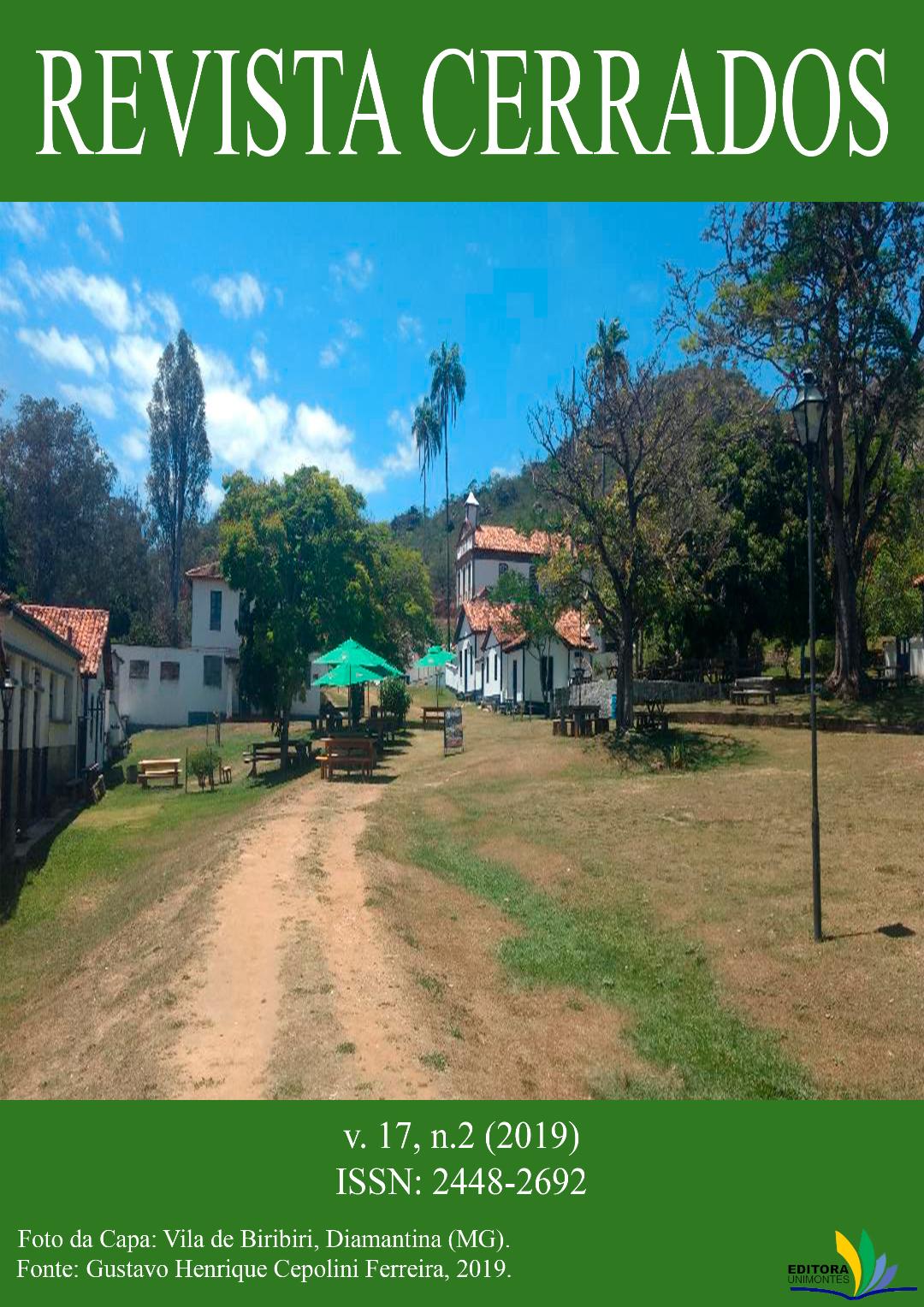Geochemical evaluation of the Quatro Vinténs stream water in the municipality of Diamantina – MG
DOI:
10.22238/rc2448269220191702145167Keywords:
Physical-chemical analysis. Microbiological. Water quality.Abstract
Quatro Vinténs Stream lies in the Northeast region of Minas Gerais State, in the Jequitinhonha river basin, being an important watercourse in the municipality of Diamantina-MG. Its source lies on the Eastern edge of the Serra dos Cristais - Espinhaço Meridional, in Glória neighborhood, its medium and low course drain important urbanized areas. Physicochemical and microbiological parameters were analyzed, and results were evaluated by descriptive statistics and seasonal variation. Methodology followed a quantitative analytical approach. Two field samplings were made, totaling 12 points per climatic period. Non-conservative physical-chemical parameters were determined in situ: temperature, hydrogenation potential, dissolved oxygen, total dissolved solids, conductivity and salinity. In laboratory, turbidity, water color by photocolorimeter and total coliforms, thermotolerant and Escherichia coli were determined by microbiological analysis. Results were compared with CONAMA Environmental Laws No. 357/2005 and No.274/2000, in addition to the Ordinance of MS No. 518/2005. Results showed that most of the points sampled are in disagreement with those recommended by the above environmental legislations. Thus, the values and correlations presented, point out that weathering, erosion process, surface runoff and the conditions of disorganized use and occupation of the drainage basin directly influence the environmental quality of surface water.
Downloads
References
AGUSTIN, C. H. R. R.; FONSECA, B M.; ROCHA, L. C. Mapeamento geomorfológico da Serra do Espinhaço Meridional: primeira aproximação. Geonomos, 19(2), 50-69, 2011.
BAGGIO, H.; ARAUJO, A. D.; FREITAS, M.O. Análise dos Parâmetros Físico-químicos Oxigênio Dissolvido, Condutividade Elétrica, Potencial Hidrogeniônico e Temperatura, no Baixo Curso do Rio das Velhas-MG. CAMINHOS DE GEOGRAFIA - v.17, n. 60, p. 105 – 117. Uberlândia: 2016. Disponível em:<http://www.seer.ufu.br/index.php/caminhosdegeografia>. Acesso em: 22 out. 2017.
¬¬______.; SOUZA, F. C. R.; TRINDADE, W. M. Morfologia Cárstica do Maciço Quartzítico da Gruta do Salitre, Diamantina– MG. CAMINHOS DE GEOGRAFIA - v. 13, n. 43, 102–113. Uberlândia: 2012. Disponível em:<http://www.seer.ufu.br/index.php/caminhosdegeografia>. Acesso em: 20 out. 2017.
¬¬______.; SOUZA, F. C. R.; TRINDADE, W. M. Carste em rochas quartzíticas da Gruta do Salitre, Diamantina – MG. Campina Grande, Ano II. Vol. 1. Nº 03. Set/Out de 2011.
______. Contribuições Naturais e Antropogênicas para a Concentração e distribuição de Metais Pesados em Água Superficial e Sedimento de Corrente na Bacia do Rio do Formoso, Município de Buritizeiro, MG. Tese (Doutorado em Geologia) – Instituto de Geociências, Universidade Federal de Minas Gerais, Belo Horizonte, 2008.
BORGES, A. C. et al. Microbiologia geral: práticas de laboratório. 2 ed. rev. ampl. Viçosa. Universidade Federal de Viçosa. 2004.
CETESB. 2007. Companhia de Tecnologia de Saneamento Ambiental. Qualidade das Águas. São Paulo: Disponível em:<http://www.cetesb.gov.br>. Acesso em: 24 mai. 2017.
CETEC – Fundação Centro Tecnológico de Minas Gerais. Estudo de Metais Pesados no Estado de Minas Gerais. Relatório Final, Belo Horizonte, 1983.
CONAMA (CONSELHO NACIONAL DO MEIO AMBIENTE). Resolução 274/2000. 29 De Novembro De 2000. Disponível em:<http://www.mma.gov.br/port/conama/legiabre.cfm?codlegi=272>. Acesso em: 19 nov. 2017.
CONAMA (CONSELHO NACIONAL DO MEIO AMBIENTE). RESOLUÇÃO CONAMA 357/05, 18 De Março De 2005. Disponível em:<http://www.mma.gov.br/port/conama/legiabre.cfm?codlegi=459>. Acesso em: 19 nov. 2017.
Deliberação Normativa Conjunta COPAM/CERH-MG N.º 1, de 05 de Maio de 2008. Disponível em:<http://www.siam.mg.gov.br/sla/download.pdf?idNorma=8151.>Acesso em 15 jun. 2017.
INSTITUTO BRASILEIRO DE GEOGRAFIA E ESTATÍSTICA – IBGE. Geografia do Brasil– Região Sudeste. Rio de Janeiro, 1988.
INTITUTO ESTADUAL DE FLORESTAS – PARQUE ESTADUAL DO RIO PRETO. Plano de Manejo do Parque Estadual do Rio Preto. Encarte 4: Planejamento da Unidade de Conservação. Curitiba. 2004.
KÖPPEN, W. Climatologia. México. Fundo de Cultura Econômica. 1948.
MOREIRA, D. A.; CONDÉ, N. M. Qualidade das águas de minas no perímetro urbano do município de Ubá-MG. Multi-Science Journal 2015; 1(1):84-89.
MS (MINISTÉRIO DA SAUDE). Resolução MS n° 518/04, 25 de Maio de 2004.Disponível em:<http://www.aeap.org.br/doc/portaria_518_de_25_de_marco_2004.pdf>. Acesso em: 19 nov. 2017.
OLIVEIRA JUNIOR, E. F. Os Impactos Ambientais Decorrentes da Ação Antrópica na Nascente do Rio Piauí - Riachão do Dantas/SE. Revista Eletrônica da Faculdade José Augusto Vieira. Ano V – n° 07, Setembro 2012.
RIBEIRO, E. V. Avaliação da Qualidade da Água do Rio São Francisco no Segmento Entre Três Marias e Pirapora – mg: Metais Pesados e Atividades Antropogênicas. Dissertação apresentada ao Programa de Pós-Graduação do Departamento de Geografia da Universidade Federal de Minas Gerais. 2010.
RICHTER, C. A.; NETTO, J. M. A. TRATAMENTO DE ÁGUA: TECNOLOGIA ATUALIZADA. São Paulo: Editora Edgard Blücher LTDA, 1991. p. 24 – 37.
SAADI, A. A Geomorfologia da Serra do Espinhaço em Minas Gerais e de suas Margens. Instituto Geociências. GEONOMOS 3 (1): P. 41-63.1995. www.igc.ufmg.br/geonomos. Belo Horizonte: 1995. Acesso em: 15 out. 2017.
Published
How to Cite
Issue
Section
License
Copyright (c) 2019 Revista Cerrados

This work is licensed under a Creative Commons Attribution-NonCommercial-NoDerivatives 4.0 International License.
In this journal, the copyrights for published articles belong to the author (s), with the rights of the first publication belonging to Revista Cerrados. The articles are publicly accessible, free to use, their own assignments, educational assignments and non-commercial applications.


















